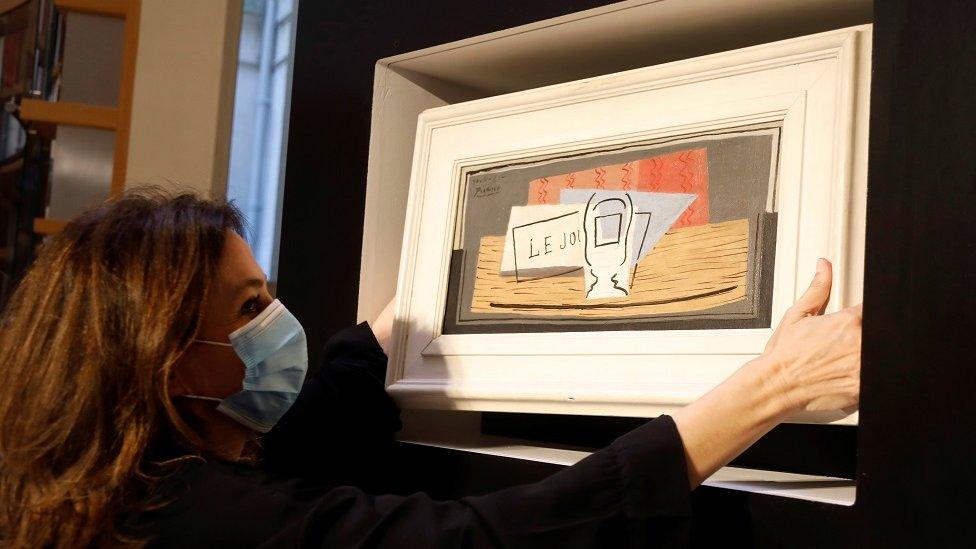Christo: Bulgarian-born artist who famously wrapped landmarks dies at 84
- Published
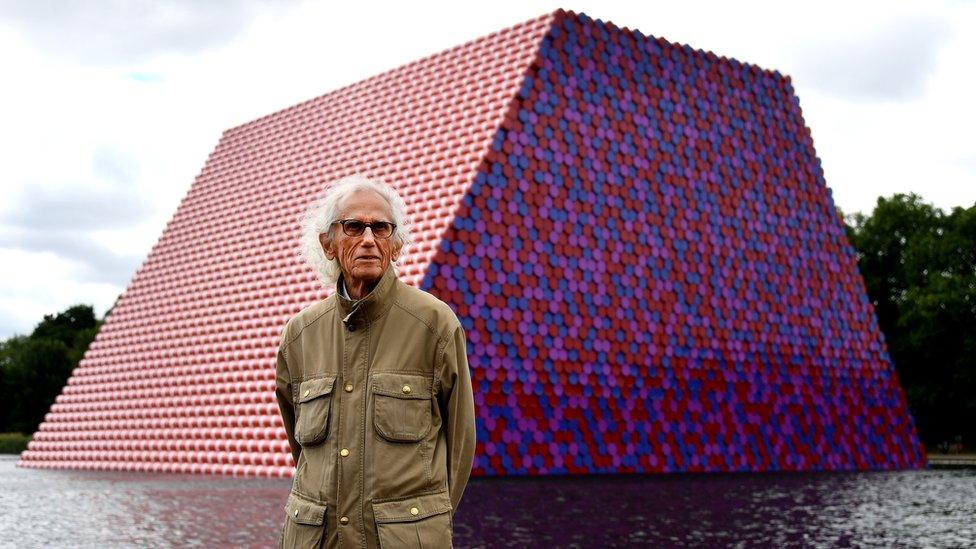
Christo with his artwork The London Mastaba, built on the Serpentine in Hyde Park in 2018
Bulgarian-born artist Christo, best known for wrapping buildings and famous landmarks in fabric or plastic, has died at his home in New York, aged 84.
He passed away of natural causes on Sunday, according to a statement posted on the artist's official Facebook page.
Christo, who always worked with his wife Jeanne-Claude, famously covered the Reichstag in Berlin and the Pont-Neuf in Paris with reams of cloth.
His artworks "brought people together" around the world, the statement says.
"Christo lived his life to the fullest, external, not only dreaming up what seemed impossible, but realising it," it reads, adding that the couple's art "lives on in our hearts and memories".
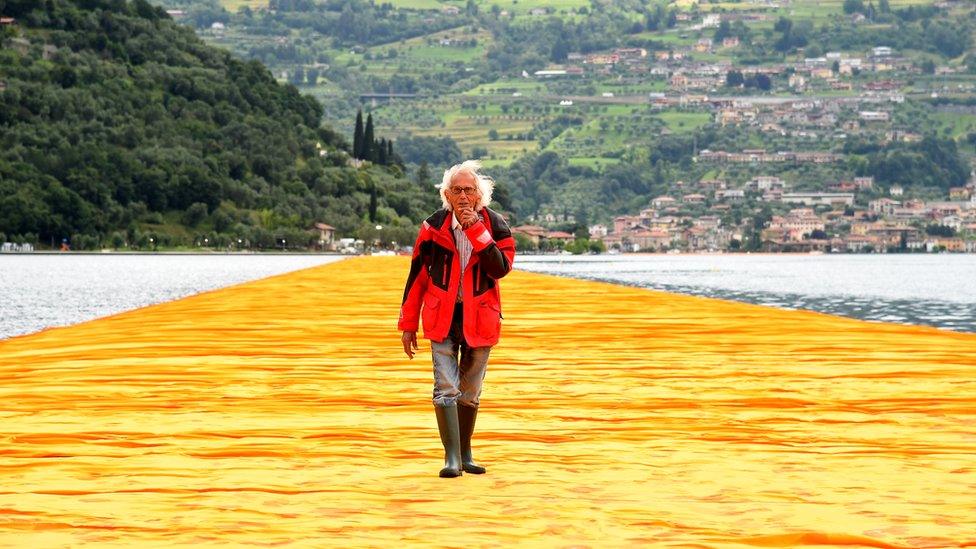
Christo at the presentation of his installation The Floating Piers in Sulzano, Italy, in 2016
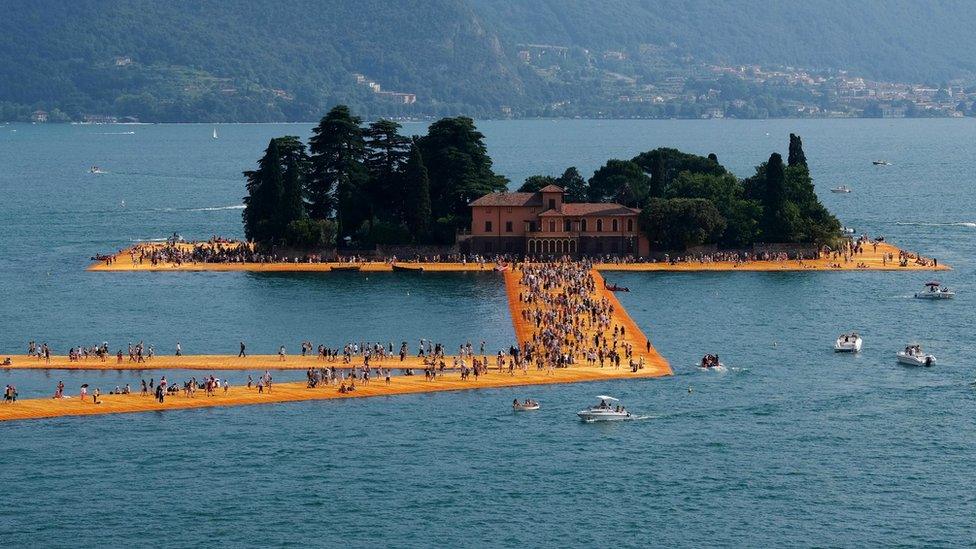
Visitors walking along The Floating Piers, an installation consisting of 100,000 sq m of yellow fabric
A 2016 installation entitled The Floating Piers consisted of 100,000 sq m of bright yellow fabric floating on polyethylene cubes on Lake Iseo, in Sulzano, Italy.


Shakespeare told us 'all the world's a stage', Christo showed us all the world's an art gallery. The Bulgarian-born artist wasn't interested in the sterile white walls of the modern museum where objects exist apart from everyday life.
He wanted to turn everyday life into art, to make people look again and think again about their surroundings. He did this by way of intervention - either by wrapping a building such as the Reichstag in Berlin in blue material, or a section of the Australian coastline in one million square feet of fabric - in both cases turning cold, hard structures into sensuous, fragile sculptures.
He worked in collaboration with his wife Jeanne-Claude, whom he met in Paris in 1958. They made their first major outdoor work three years later in Germany, covering oil barrels stacked in Cologne harbour with material. Jeanne-Claude died in 2009 leaving Christo to continue alone, which he did, with a plan to wrap the L'Arc de Triomphe in Paris next year - a project that will probably still be realised.

In 2018, a Christo artwork - his first major outdoor piece to appear in the UK - was unveiled at the Serpentine in London's Hyde Park. The London Mastaba was a colourful sculpture in the shape of a trapezoid and made from more than 7,500 200-litre barrels stacked together, displayed on a floating platform.
Christo and Jeanne-Claude: How we wrapped the Reichstag
Born Christo Vladimirov Javacheff in Gabrovo, Bulgaria, in 1935, he spent time in Austria and Switzerland before moving to France, where he met Jeanne-Claude Denat de Guillebon in Paris.
Along with transforming large-scale landmarks, the couple also created monumental environmental works of art together in natural settings, before Jeanne-Claude's death in 2009, aged 74.
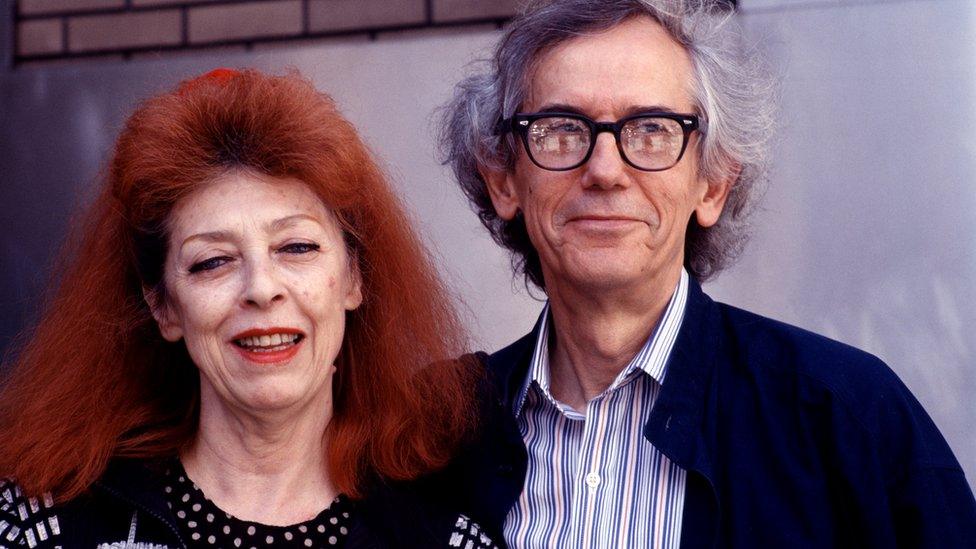
Christo's works were produced with his wife Jeanne-Claude, seen here in 1997
An unfinished project in Paris entitled L'Arc de Triomphe, Wrapped is planned to be completed and exhibited in September 2021, in accordance with Christo's wishes.
"We borrow space and create gentle disturbances for a few days," Christo once said.
Sunday's statement concludes: "In a 1958 letter Christo wrote, 'Beauty, science and art will always triumph'. We hold those words closely today."
- Published1 June 2020
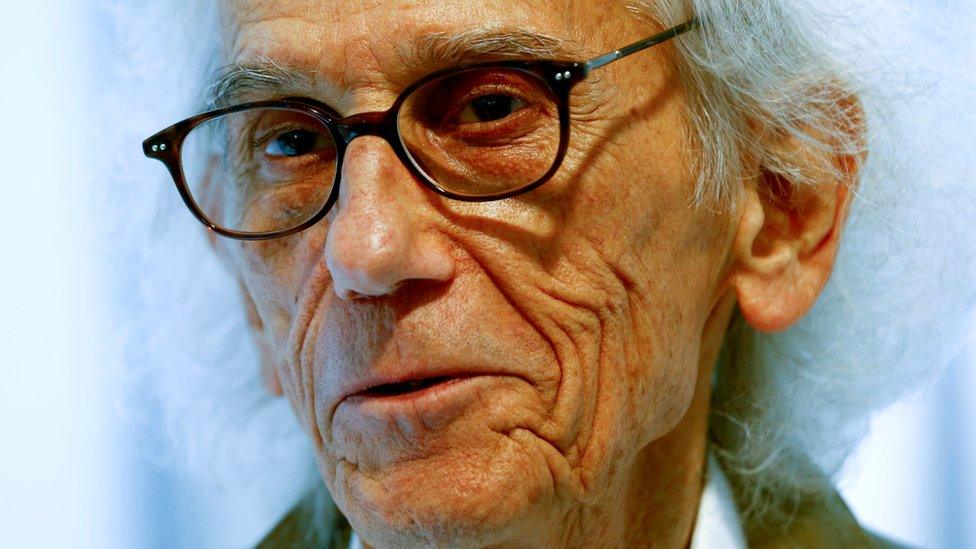
- Published4 February 2020
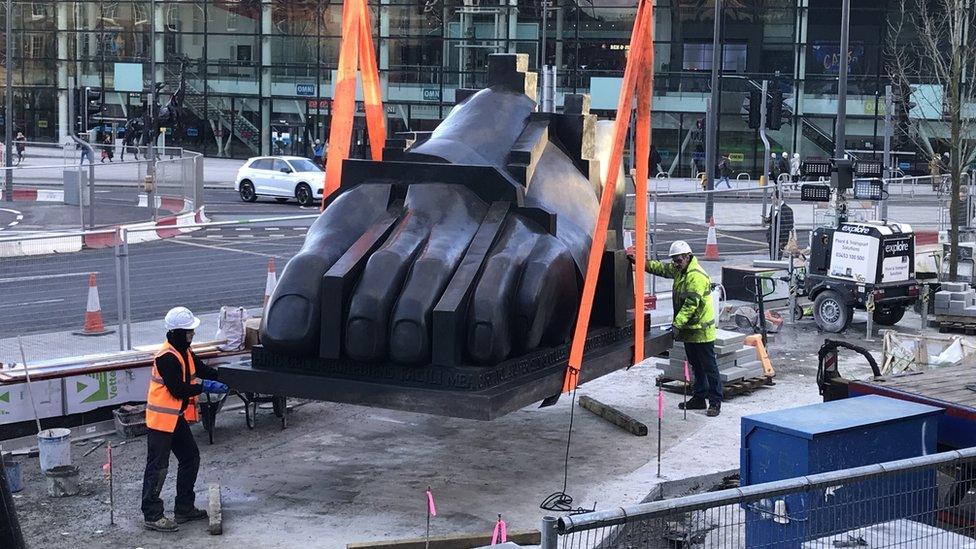
- Published20 May 2020
